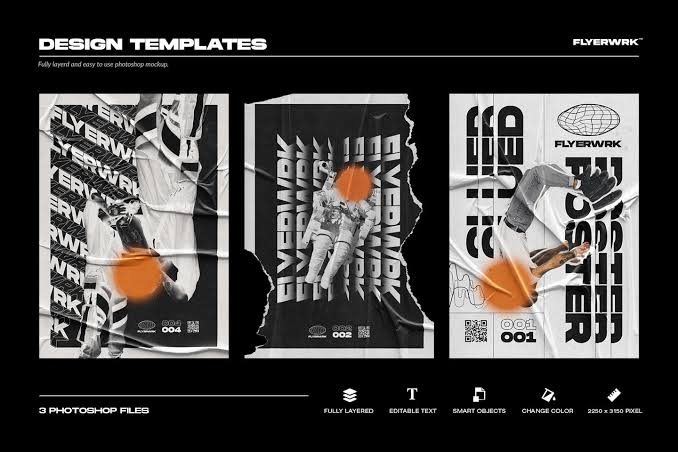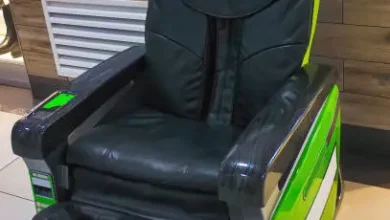How to Print Posters with Textured Effects?

Poster printing that incorporates textured effects refers to adding both physical and visual texture in a way that promotes touch and dimensions. It may involve different methods like embossing, foiling or using unique types of ink.
To print posters with textured effects, start by selecting a suitable paper and texture technique. Employ techniques such as embossing or foil stamping for the additional texture and attractiveness. To achieve the optimal outcome, ensure the design is suitable for poster printing.
Understanding Texture Types
Texture types in printing add depth and interest to your designs. Common textures include embossing with a raised design, debossing which creates an indented effect, foil stamping that adds a shiny metallic finish among other finishes and unique textured inks.
Various purposes are served by different textures. For instance, while embossing and debossing are suitable for a classy appearance, foil stamping can make things stand out. Therefore, textured inks offer an additional layer of dimension and subtlety to your posters.
Selecting the Right Paper
Choosing the most suitable paper is important in order to obtain the finest textured impacts. Look for paper that supports the texture technique you plan to use, as an example, distorted stock sheets enable embossing procedures. The surface finish of a paper is equally important; it can be glossy or matte or satin. This choice should depend on the desired appearance and touch. Above all, make sure it matches your printing process so that the results will be best.
Exploring Texture Techniques
Exploring texture techniques can add unique dimensions to your posters. Foil stamping adds a shiny metallic touch that enhances visual interest while you can have embossed parts or recessed impressions made by it.
Embossing is the process in which some parts of your design are raised to get the 3D impression whereas debossing does exactly the opposite thing. Textured inks are another way of doing this without changing the look of the papers as they provide a tactile quality instead.
Screen Printing Basics
Ink is pushed through a mesh screen during the procedure of screen printing in order to produce designs on paper or pieces of clothing. Posters become more colorful with this process which does not call for any computer skills. A squeegee is used for layering ink over the stencil prepared beforehand.
Using Embossing for Impact
Embossing creates a raised design on your poster, making certain elements pop. It offers a tactile experience that brings out more visual aspects as well it is best suited for highlighting critical areas in your design.
Different papers can benefit from this approach or it can also be mixed with other techniques. When employed, embossing leave behind an impression of classiness and refinement that set your poster apart from others in the crowd.
Applying Foil Stamping
Folly stamping brings about a shiny, metallic finish to your poster design. A heated die presses the foil onto the paper producing an effect that is very vibrant and attractive. It’s fantastic for adding some luxury touch as well as emphasizing certain aspects of it.
Incorporating Raised Ink
When you integrate raised print into a poster, it feels like a three-dimensional object. There is some specialty ink used in this case which raises parts of the printing on the paper thereby highlighting certain sections of your artwork.
The visual attraction and distinctiveness of your t-shirt are enhanced by employing this strategy.
Exploring UV Coating
Exploring UV coating adds a glossy, protective layer to your poster. The surface shines brightly and the colors are more vivid because this coating is treated with ultraviolet rays. Also, it acts as an additional defense against dirt and other harms.
UV coating can be applied selectively to certain areas or over the entire poster. This technique highlights specific elements and gives your poster a polished, professional finish.
Textured Lamination Options
- Matte Lamination: Matte lamination is such that it can be said to have a non-shiny, smooth finish which is good for enhancing texture without shining light.
- Glossy Lamination: This provides a shiny surface reflecting light in such a way that enhances colors and makes them appear brighter while at the same time allowing textured design to stand out graphically.
- Velvety and tactile finish: It feels like silk and is a top-notch enhancement of its texture.
- Textured Lamination: Involves patterns or finishes that serve to give a surface an additional layer of texture.
- Rubber Bounce Anti-Scratch Lamination: Precincts defilement of your advertisement without losing the feel of astex.
Choosing Inks for Texture
Choosing inks for texture involves selecting ones that enhance the design’s tactile qualities. Specialty inks like raised or metallic inks add a unique feel and visual impact to your poster. To get a 3D look and that will capture attention, the inks are made this way.
By using different inks one can achieve various textures and finishes. For example, glossy inks will make it shiny while, matte ones will make it non-shiny and smooth. For best outcomes ensure the choice of ink matches with your printing method.
Conclusion
Printing posters with textured effects involves careful planning and technique selection. Choose the right paper and texture methods like embossing, foil stamping, or raised ink to add depth and interest. Ensure your design and printing methods align to achieve the desired effect.
When you explore different texture methods and inks, it will be possible to produce posters that are exclusive and therefore impressive. Try out multiple options until you get what seems best for your design then finish with professional touch so that everyone would notice.
Keep an eye for more news & updates on UsaTechMagazine.Com!




